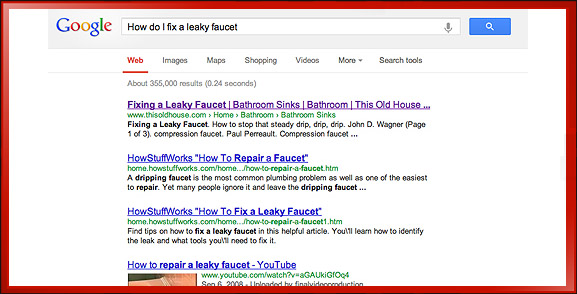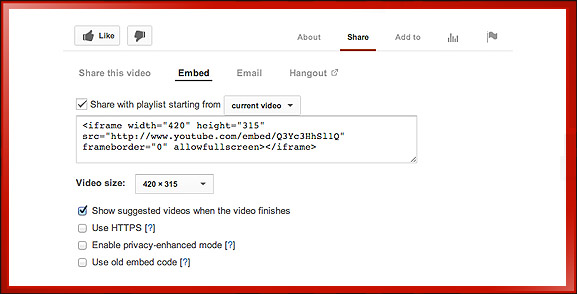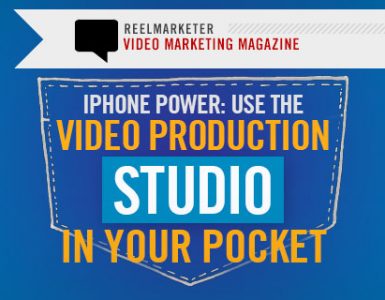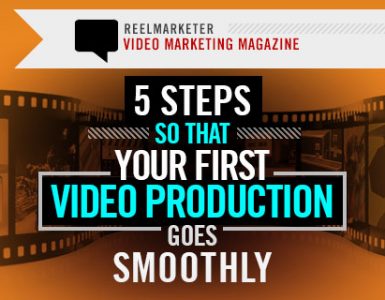Have you ever voiced any of these objections when it comes to adding video to your online marketing strategy?
- It’s not that important.
- It’s too expensive.
- It’ll make us look unprofessional.
- We don’t have anything to say.
With misconceptions like these afoot, it’s easy to see why companies are hesitant to jump into video marketing.
But these misconceptions are just that–misconceptions. It’s time to bust these video marketing myths, and see why video matters–and how you can overcome these roadblocks.
“Video isn’t that important in online marketing.”
It’s time to bust this myth once and for all. Video isn’t a frivolous, fruitless task. It’s fast becoming a big player in driving online marketing and business results.
The nature of online search results is shifting. Once, it was just web pages that dominated search engine results pages. Then, blogs and articles entered the scene.
Now, you may see any mix of websites, blogs, videos and even images crop up when you search Google.

A mix of articles and how-to videos show up in this search on Google.
[embedit snippet=”bannerad1″]
Another factoid worth considering: video-hosting site YouTube is the second largest search engine after Google.
Still not convinced? Take a look at some of these video marketing statistics:
- Companies using online video for promotion have seen sales lifts from 20% to 40%.
- Consumers who watch product videos are 85% more likely to buy products, compared to those who do not watch product videos.
- 65% of executives visited a vendor’s website after watching a work-related video online.
- 42% of C-suite execs made a business-related purchase after watching a business-related video.
Taking all of these points into account, it becomes clear that video is a major avenue through which people discover businesses online. And, video has a pretty powerful impact on brand visibility and sales.
“Video is too expensive.”
You don’t have to have a blockbuster budget or million-dollar equipment to get great results from your video marketing.
Content and brand strategist Margot Bloomstein shared these tidbits about Mayo Clinic’s video blogging efforts, shared at the November 2012 Content Marketing World conference.
75% of @mayoclinic‘s popular videos (2000+) were shot just on Flip cams. Nimble, easy, accessible, and cheap. #CMWorld
— Margot Bloomstein (@mbloomstein) November 7, 2012
“They considered it a sign of the apocalypse to use a consumer grade camera to video blog,” @mayoclinic‘s @leeaase #CMWorld
— Margot Bloomstein (@mbloomstein) November 7, 2012
Mayo Clinic produced the majority of its most successful videos using an everyday, Regular Joe camcorder. Budget doesn’t have to be a roadblock to creating engaging video content for the web.
“Video is too unprofessional.”
Many companies worry that they’ll look unprofessional by using a platform like YouTube or Vimeo. One concern is that the video platform’s branding will compete with or detract from the company’s own branding.
There’s also worry about videos popping up from other businesses. Companies don’t want viewers to get distracted or, even worse, discover a competitor.
Fortunately, there are ways to beat these challenges.
Nowadays, video players look pretty slick, and they do give you options for customizing the appearance of your videos–including downplaying or even completely removing the video host’s branding.

We worked with Richmond law firm Hirschler Fleischer to create a video to feature on their website. The video, hosted on YouTube, has a custom intro image and minimal YouTube branding.

Even after the video starts, the focus is on the Hirschler Fleischer story and brand, not YouTube’s. The video is seamless, and suits the firm’s website.
You can also take steps to control what other video content shows up with your video. For example, YouTube lets you turn off the “show related videos” feature when you embed videos.

To turn off suggested videos, click on the “embed” link in the menu options for sharing. Then, uncheck the box next to “show suggested videos when the video finishes.”
Video players are making strides in the flexibility they give you. By tweaking some customization settings, you can make sure that your video is branded as you, and distractions are minimized.
[embedit snippet=”bannerad1″]
“We don’t have anything worthwhile to say.”
Would you ever tell a customer, “Hey! We’re just like every other company that sells blue widgets!”?
Hopefully, your answer is a resounding, “No!”
You have a story to share, so share it. You’re not out to win the next Academy Award or break box-office records. You don’t have to have a superstar screenwriter and a sought-after director to make your story shine. It just takes some good, old-fashioned planning, a genuine passion for what you do and a earnest desire to help your customers better understand your background and how you can help them.
Stumped about the kinds of videos you could create? What about:
A video introducing your team and explaining your business philosophy, like Hirschler Fleischer?
A short video demo showing how to install or test a product, like Poly Processing?
Or a video interview with your customers or business partners, like Greater Richmond Partnership?
Thinking of video topics can be similar to brainstorming ideas for your blog–ultimately, you need to think about how you can best help your customers and answer their burning questions.
Have you faced similar hesitations when it comes to video marketing? What made you decide to go for video in the end? What results have you seen? We’d love to hear about your experiences; share your story in the comments below.
This article was originally written and featured on Rick Wittington Consulting here.





